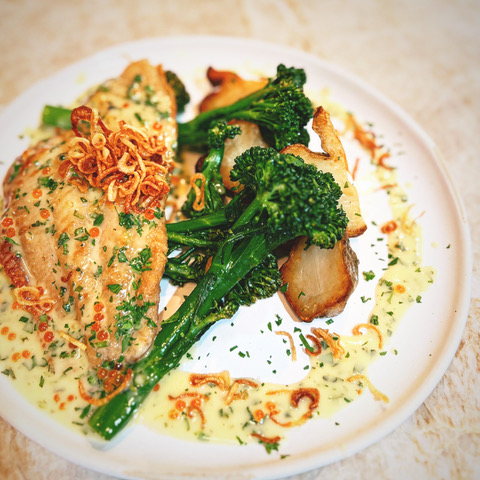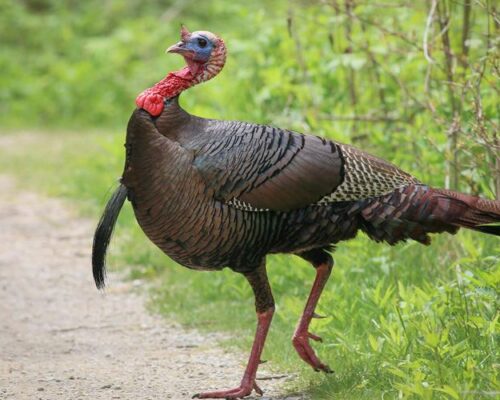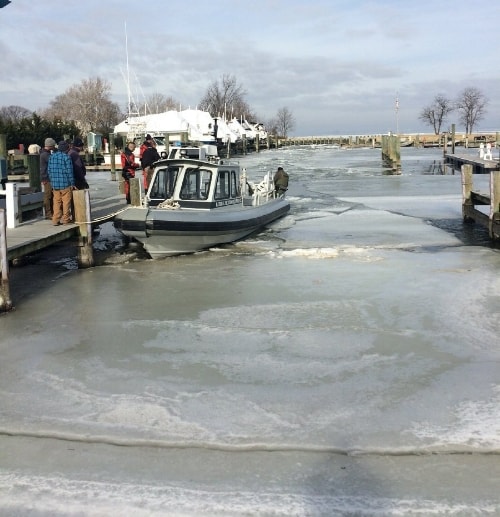As the holiday season wraps up and with it go the ham and turkey leftovers, the state of Maryland is urging people to make a bold resolution for the New Year: eat more blue catfish.
State fisheries managers want to track which restaurants are serving the invasive species and fellow invasive threat, the snakehead. That’s why they’re calling on diners to report in when they spot blue cat or snakehead on a local menu.
It’s not just about trying a new dish; it’s about making a positive impact on the Chesapeake Bay’s delicate ecosystem. Blue catfish are not only an invasive species but also an apex predator, threatening native species. The Maryland Department of Natural Resources (DNR) is encouraging diners (and watermen) to target blue cats as a means of population control. It is also now being served at state institutions like prisons, hospitals, public schools, and universities.
Consuming blue catfish benefits the environment and creates economic opportunities for local fisheries and seafood markets. By diversifying the seafood industry and promoting sustainable harvesting practices, watermen also receive a much-needed boost.
Maryland’s Best, a brand of the Maryland Department of Agriculture, has been working with the restaurant industry on getting wild-caught Chesapeake blue catfish on more menus. In recent months, MDA has been gathering information as more and more restaurants place the fish on the menu.
“Maryland’s Best is curating a list of restaurants and retail stores that are selling the wild-caught Chesapeake blue catfish, so consumers know where to purchase the fish,” says Matthew Scales, director of the department’s seafood marketing program. “By placing the fish on the menu, we are helping decrease the number of Chesapeake blue catfish in the Bay, who are eating other species that are native to the Bay.”
If you find blue cat on a restaurant menu or in a market or grocery store, DNR wants you to fill out a form, helping to add more establishments to the growing directory. On the website you can also find recipes for at-home cooks to try.
Not only are blue cats tasty, but they are also rich in omega-3 fatty acids and protein, making them a nutritious choice. They can be prepared in various ways, from grilling and frying to baking and smoking—and restaurants find them a unique addition to their menus.
Kevin Ketron, the maestro in charge of everything food-related at the Inn at Perry Cabin in St. Michaels, admits he was surprised to see catfish on the menu of the Stars restaurant when he joined the resort last month.
“It was odd to me at first; I didn’t know it was an invasive species,” he said. “I worked with invasive lionfish in other restaurants before, but blue catfish was new to me. But sustainable food is a big component of what we do here at the Inn at Perry Cabin.”
A newcomer to the Annapolis restaurant scene, Leo co-owner Hilarey Leonard highlights their commitment to using hyper-local ingredients that are produced sustainably—including seafood.
“When we opened last year, we had rockfish on the menu. But when we couldn’t get it anymore, we tried snakehead. Thanks to the media coverage, it became our top-selling dish,” says Leonard. “Now that it’s harder to find snakehead, we are serving blue catfish—our chef’s preparation of it is insane, it’s so good.”
Leo’s chef, Matthew Lego, prepares seared catfish filets in a beurre blanc sauce with roasted sunchokes, broccolini, tarragon and trout roe. “We hope to get snakehead back at some point, but the catfish is selling really well right now,” adds Leonard.
As Marylanders embark on a culinary journey into the world of blue catfish, they not only savor a delectable dish but actively contribute to preserving the Chesapeake Bay’s precarious balance. It’s a resolution that combines delightful meals with environmental responsibility, as the state works towards a sustainable and delicious future for the region’s seafood industry.
As the MDA’s Scales says, “We all have to eat our way out of this problem”.




